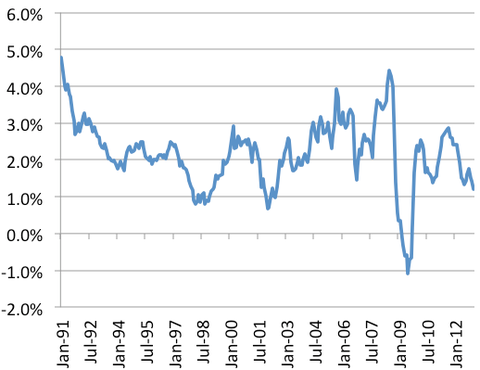LONDON — The Bank of England decided to keep its benchmark interest rate unchanged on Thursday amid doubts about the strength of Britain’s economic recovery.
The central bank left its interest rate at 0.5 percent, a record low, and also held its program of economic stimulus at £375 billion, or about $580 billion. Some economists expect the Bank of England to expand its bond-buying program later this year to help the recovery, while others said recent economic data was encouraging and further stimulus might not be necessary.
“There are broad improvements in business sentiment and with equity markets heading to new high, we are not expecting anything” until Mark Carney takes over as governor of the Bank of England in July, said James Knightley, an economist at ING Bank in London, before the rate announcement.
The British economy narrowly avoided falling back into a recession for a third time in five years at the beginning of this year. The 0.3 percent growth in the first three months of this year was hardly a sign of a robust recovery, but it allowed George Osborne, the chancellor of the Exchequer, to dispel critics of his austerity measures, who had argued that spending cuts and tax increases would pull Britain back into a recession.
While still in decline, the manufacturing and construction industries shrank less than some economists had expected in April and the services sector also strengthened last month. Economic confidence is improving and house prices increased to the highest in almost three years in April, according to Halifax, a mortgage lender.
Under pressure to show his austerity program was indeed repairing Britain’s economy by reducing the budget deficit without choking off growth, Mr. Osborne in March gave the Bank of England more flexibility in supporting the economy without the need to lower inflation in the short term.
Consumer price inflation is at 2.8 percent, above the Bank of England’s 2 percent target. Prices have been climbing faster in Britain than in the euro zone or the United States, squeezing households as salaries remain broadly unchanged.
The European Central Bank cut its benchmark interest rate to a record low of 0.5 percent from 0.75 percent last week. The move was widely expected and seen as mostly symbolic, to show that the E.C.B. president, Mario Draghi, was willing to act to bolster the euro zone as recession threatens to engulf countries that were previously spared, like Germany.
The troubles in the euro zone also weighed on Britain, which is a member of the European Union but not part of the euro zone. The region is Britain’s largest single export market. Mr. Osborne repeatedly pointed to weak demand for goods and services from the euro zone as a reason for the slow recovery of the British economy.
Mr. Knightley is among the economists who expect the arrival of Mr. Carney at the helm of the Bank of England in two months to bring some change to the London institution. Mr. Carney, currently the governor of the Bank of Canada, might be more specific about what to expect from interest rates in the future, Mr. Knightley said. Few economists currently expect interest rates to increase before the end of next year.
Article source: http://www.nytimes.com/2013/05/10/business/global/Bank-of-England-leaves-rate-unchanged.html?partner=rss&emc=rss
